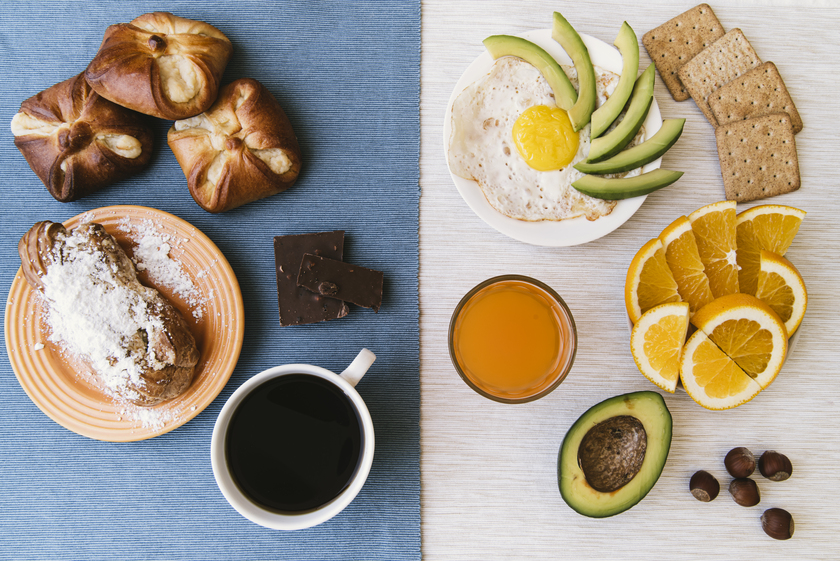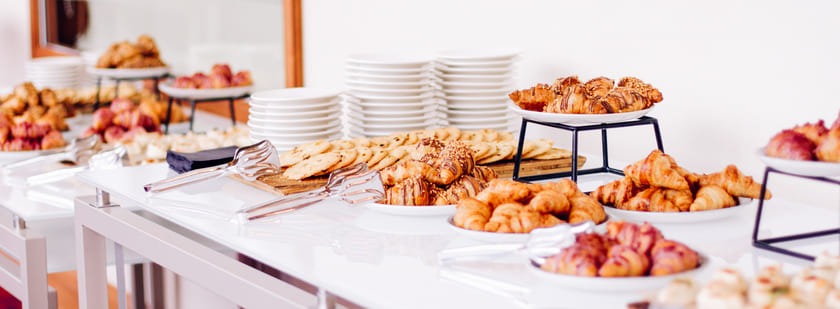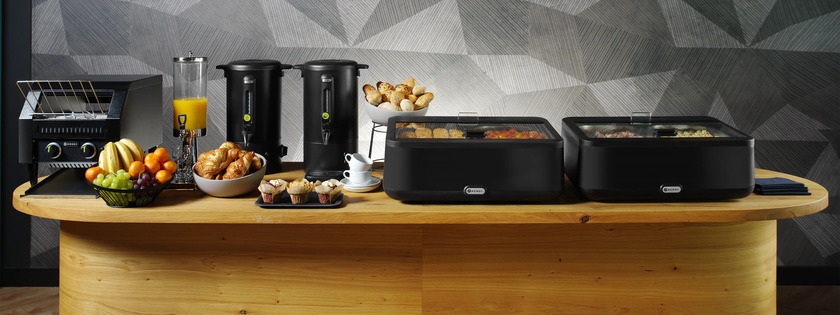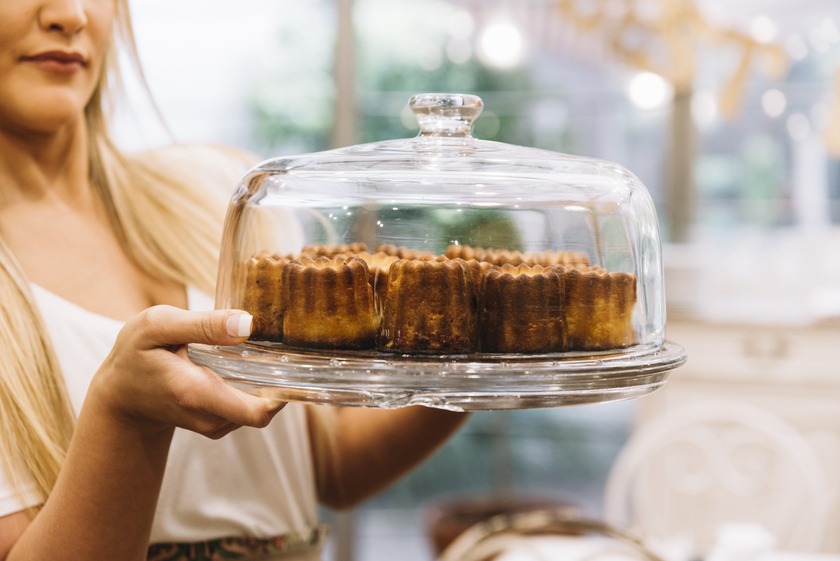Il buffet della prima colazione in hotel: regole e consigli
Setting up the hotel breakfast is a key aspect of meeting guests’ expectations and standing out from the competition. Here are best practices for creating an unforgettable breakfast experience, fromsetting up the buffet to attending to dietary needs.
Types of breakfast at the hotel
There are different types of breakfasts that can be offered in hotels, each with its own characteristics.
- Continental breakfast at the hotel: Continental breakfast is a hotel classic, featuring a selection of light and sweet foods, such as breads, croissants, jams, cereals, yogurt, and fresh fruit. It is ideal for those who prefer a light and quick breakfast before starting their day.
- American breakfast at the hotel: The American breakfast is hearty and hearty, consisting of a variety of hot and cold dishes. It often includes scrambled or fried eggs, bacon or sausages, potatoes, toast, and sometimes waffles or pancakes. It is perfect for those who want a rich and hearty breakfast to get them through the day.

Breakfast buffet or served at the table?
In the context ofsetting up a hotel breakfast, it is crucial to understand the different ways in which breakfast is offered.
The hotel breakfast room is the beating heart of the guests’ morning experience, and the buffet is the focal point of this experience.
Unlike breakfast served at the table, where dishes are brought directly to guests by staff members, the buffet offers guests the opportunity to help themselves from a wide selection of food and beverages arranged on specially set tables.
It is an opportunity for guests to customize their dining experience according to their own tastes and preferences. The buffet should be organized strategically, with a logical and appealing arrangement of foods to stimulate appetite and facilitate choice.

Equipment needed for setting up the breakfast buffet
It is essential to have the right equipment to ensure a flawless buffet in the context of the Ho.Re.Ca. sector. Here is a list of equipment essential for setting up the breakfast buffet:
- Tables and tablecloths: Durable tables and quality tablecloths are critical to creating an attractive presentation of food.
- Trays and plates: Trays and plates of different sizes are essential for arranging food neatly on the buffet.
- Serving utensils: Cutlery, tongs, spoons, juice dispensers to enable guests to serve themselves comfortably.
- Food and Beverage Containers: Transparent, eye-catching containers for storing food safely and visibly.
- Coffee machine: A professional coffee machine to ensure a steady flow of high-quality coffee.
- Professional Instrumentation: Beverage and food preparation devices such as professional toaster for toasted bread and juicer for fresh orange juice.

Design and presentation: how to organize a perfect buffet
The design and presentation of the buffet are crucial to creating a memorable experience for guests. Using a logical and attractive arrangement of food, with quality table linens and creative decorations, can turn a simple buffet into a gastronomic work of art. Then be sure to present the food in an appealing way to stimulate guests’ appetites.
Hygiene and food safety: the rules to follow for breakfast in hotels
Compliance with health regulations is of paramount importance to ensure the safety of guests and compliance with local regulations. Maintaining buffet cleanliness and hygiene, ensuring food freshness, and adopting safe food handling practices are essential to avoid health problems and protect the hotel’s reputation.
Temperature compliance:
To ensure food safety, it is essential to keep both fresh and hot produce at optimal temperatures. Fresh produce, such as meats, dairy products, fruits and juices, should be stored between 0 and 4°C to preserve freshness and prevent the growth of harmful bacteria.
Similarly, hot products should be kept at temperatures above 63°C and should be cooked or reheated on demand or as needed. You might then consider using a professional electric food warmer It is advisable to monitor temperatures regularly to ensure compliance with these regulations.
Protection of delicate products:
Delicate products must be properly protected to avoid exposure to air and sun. Use wire guards or airtight bells to protect sensitive foods and keep them fresh and free of external contamination.

Regular cleaning:
Given the many people who pass through the buffet, it is essential to implement a detailed cleaning plan. Clearly define the materials and procedures to be followed to ensure that all equipment is regularly cleaned before, during, and after service.
In case of accidents, such as falling tools, replace them immediately. In addition, tablecloths should be washed and changed daily to ensure a hygienic environment.
Offer for guests with special dietary needs
To best meet the needs of your hotel guests, it is important to offer options for food intolerances and special diets. Clearly labeling each dish with allergen information and providing a variety of options without gluten, dairy or added sugar can improve the overall guest experience.
What to prepare for breakfast in a B&B?
When it comes to a Bed and Breakfast (B&B), where practicality is often the watchword, the approach to breakfast may differ slightly from that taken in other types of accommodations, favoring local products and regional specialties to provide an authentic and memorable touch.
Conclusions
To conclude, the hotel breakfast setup is crucial to satisfy guests and stand out from the competition. Following best practices, from choosing breakfast types to attending to dietary needs, is critical to success.
The approach between buffet and table service offers different experiences, both of which require attention. The right equipment, attractive design, and hygiene are key. Offering options for special dietary needs enhances the experience. A well-organized breakfast makes all the difference.



